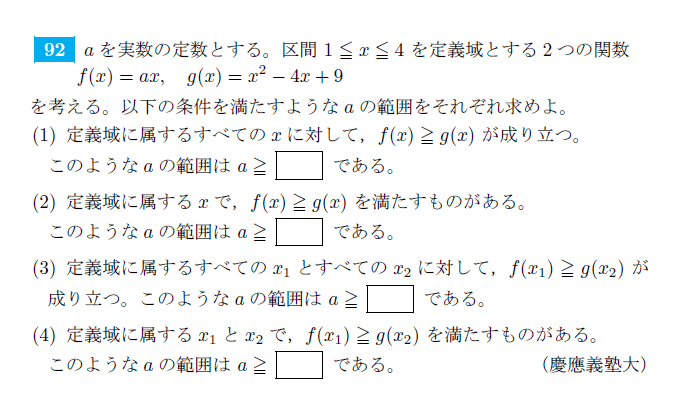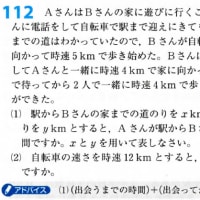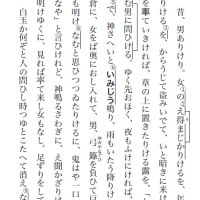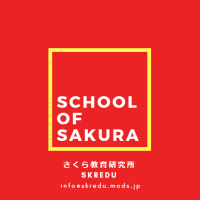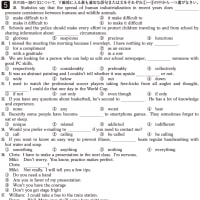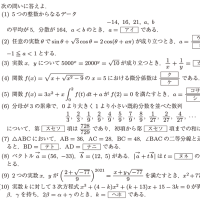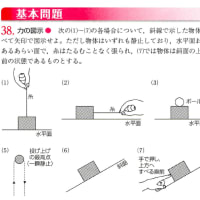文章24 なぜ割り箸(ばし)は二度使わない? 早稲田大学
清いものを汚すことを忌み嫌う文化が日本にはある。例えば割り箸の場合、使用済みのものを再度使うことに抵抗を感じない人は少ないだろう。いくら洗って衛生上での問題がなくなっていても、その箸にはケガレがあると感じてしまう。これはわれわれが行動における大きな価値基準として、清らかさ=浄、汚れ=不浄という観念を持っている一例である。使用後の汚れた割り箸は不浄と見なされ、それを用いることは心理的な【禁忌】(タブー)にすらなっているわけだ。タブーといえば人肉食や女人禁制などがよく知られるが、現在の日本では、手でご飯をつまんで食べる行為は禁忌にあたる。卑弥呼(ひみこ)の時代には箸がなかったそうだから、箸をめぐる浄、不浄の観念も大陸から渡ってきたようである。一方インドでは右手でご飯をとって食べるのが常識で、不浄とされる左手で食べるのはタブーとされる。こうした文化の相違を研究するのが【文化人類学】や【民族学】である。
さて箸といえば、正月になると白木でできた特別なものを使う。普段は食べない、おせち料理がふるまわれたりする。こうしたことは、日常(ケ)とは違ったハレの日を飾るため、象徴化された行事だといえるだろう。【民俗学】のいわゆるハレとケは、このような特別な日とそうでない日々を意味する用語である。ちなみに「晴れ着」ということばはハレから派生してできたものだ。人々は晴れ着姿で、神社仏閣に参って初詣(はつもうで)をする。人の集まる大きな寺社は、そこを取り巻いて門前町が発展するように、おおむね街の中心にある。そこはハレの舞台にふさわしい浄めの場でもある。そうして寺社の周囲には富裕な階層が住み、同地から遠いところに庶民が暮らすという状況も多い。これは【中心と周縁】の、一つの例にあたる関係といえる。
Sentence 24 Why don't you use chopsticks twice? Waseda University
"There is a culture in Japan that abhors the contamination of clean things." For example, in the case of disposable chopsticks, few people would feel comfortable reusing used items. No matter how much you wash your chopsticks and there are no sanitary problems, you still feel that the chopsticks are dirty. This is an example of how we have the notion of cleanliness = purity and dirt = impureness as a major value standard in our actions. Dirty chopsticks after use are considered unclean, and using them has even become a psychological [taboo]. Speaking of taboos, eating cannibalism and banning women are well-known, but in present-day Japan, the act of pinching rice with your hands is taboo. It is said that there were no chopsticks in Himiko's time, so it seems that the concept of purity and impurity related to chopsticks came from the continent. On the other hand, in India, it is common sense to pick and eat rice with the right hand, and eating with the left hand, which is considered unclean, is taboo. Cultural anthropology and ethnology study these cultural differences.
Speaking of chopsticks, we use special ones made of plain wood during the New Year. New Year's dishes that you don't usually eat are served. It can be said that this is a symbolic event to decorate a special day that is different from everyday life (ke). The so-called hare and ke in [folklore studies] are terms that mean such special days and days that are not. By the way, the word “Haregi” was derived from Hare. People wear their best clothes and visit shrines and temples for the New Year's visit. Large temples and shrines where people gather are generally located in the center of towns, like temple towns that develop around them. It is also a place of purification suitable for the stage of hare. In many cases, the wealthy class lived around the temples and shrines, while the common people lived far away from the temples and shrines. This can be said to be an example of the relationship between [center and periphery].
EXERCISES 27
1. 次の各文の( )内の語を適当な形に直しなさい.
1) I remember (play) in this park when I was a boy.
2) She'll never forget (meet) Mark for the first time.
3) Don't forget (brush) your teeth before going to bed.
*4) We stopped (discuss) the matter because it had already been resolved.
2. 日本語に合うように( )内の語句を並べかえなさい.
1) 5年前に君とフランスに行ったのを覚えている.
I (with, France, going, you, remember, to) five years ago.
2) 忘れずに犬にえさをやってください.
Please (feed, to, the dog, remember).
3) 彼はスーパーで牛乳を買い忘れた.
He (to, at, forgot, buy, milk, the supermarket).
*4) メアリーは試しにドアを2回ノックしたが,だれも出なかった.
Mary (knocking, twice, tried, the door), but nobody answered.
3. 視力とニンジン
I was never interested in food as a child, but I do remember being encouraged to eat plenty of carrots to help me to see in the dark. This folklore is supported by sound science. The nutrient beta carotene filling carrots converts to vitamin A in the body and vitamin A is important for night vision.


